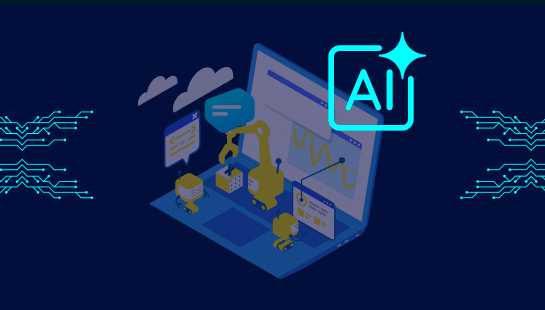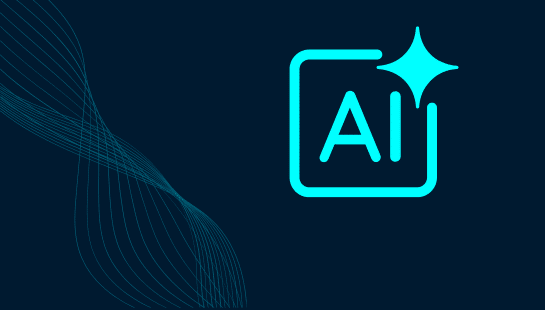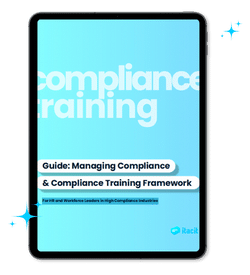Did you know the majority of employees these days are considered deskless workers or frontline staff? Yet prioritizing communication with frontline employees still isn’t the norm. The way you do – or don’t – communicate with your staff can have a tremendous effect on your business, particularly across high-pressure industries like healthcare, logistics, and manufacturing.
If you’re not already thinking about how to improve communication between frontline employees, you should be.
Making internal team members the focus, particularly your frontline workers, can boost feelings of connection and alignment which ultimately can empower them to succeed in their role.
According to a McKinsey study, effective communication with staff can improve productivity by 25 percent. Imagine what a 25 percent increase in productivity from your frontline could mean for your business!
If you’re looking for an actionable path to improve engagement with your frontline workforce, look no further. This article focuses on the top 9 tips for setting into action a plan for strengthening internal communication, organizational goal alignment, and employee empowerment on the frontline and beyond. Now, let’s dive in.
Table of Contents
- Key challenges
- Tips #1-9
- Make trust and accountability a priority
- Align communication channels
- Tailor messaging for the frontline
- Be a champion for two-way communication
- Ramp up leadership communication skills
- Leverage technology to improve company-wide communication
- Introduce employee recognition programs
- Emphasize visual communication
- Make a point of scheduling regular check-ins
- Industry insights
TL/DR Download a PDF of this article to read when you are ready!
Effective frontline employee communication matters
Who are frontline workers?
Frontline workers make up the vital day-to-day faces, voices, and representation of your organization. They communicate broadly with the greater public, providing essential services in the community, interacting directly with customers, and ensuring daily operations run smoothly on behalf of your company.
Considering the role of frontline staff within the overall workforce structure is a helpful way to visualize what makes this essential workforce so essential. Frontline teams span the industry spectrum, from healthcare professionals like nurses and pharmacists to factory workers in manufacturing, customer service representatives in enterprise and tech, and public safety workers like firefighters and postal workers.
Building strong internal communication strategies to reach remote workers is more important now, than ever before.
And yet, despite their critical role, many frontline teams face major communication barriers that can impact engagement, productivity, and overall business success. About 86% of employees and executives cite ineffective collaboration and communication as the underlying cause of workplace failures. That’s an astounding statistic and underscores how employee engagement strategies need to focus on improving frontline communication platforms. When done effectively, deskless teams can stay connected and informed when engaging in the field.
Key challenges in frontline communication
Frontline workers by another name are deskless employees. They are not office-based and therefore have very different communication needs that require very different communication solutions. Common connection points like access to emails, internal portals, and video calls are inconsistent or untimely, and can create a real challenge for employees and field managers alike. Some common struggles include:
- Decentralized teams: Deskless workers are spread across locations, shifts, and time zones which limits face-to-face interaction, making real-time communication with employees difficult. Lack of access for these employees creates a significant barrier to overcome when facilitating two-way communication best practices, like sharing feedback, voicing concerns, or receiving real-time support.
- Shift work & scheduling conflicts: Rotating schedules mean remote employees may miss key updates from traditional corporate communication channels. This leads to knowledge gaps, stale information, misunderstandings, and reduced connection with their direct manager and senior leadership team.
- Technology & device limitations: Many frontline workers don’t have access to company provided devices or secure platforms. This forces increased reliance on unofficial channels which may not be accurate, effective – or worse – compliant.
But there is hope. By focusing on innovative solutions, like adopting a mobile workforce management platform, employers are finding ways to meet their frontline staff – not at their desk or computer – but at their mobile phone instead. Leveraging mobile technology in this way paves a path to superior frontline worker communication.
With frontline jobs making up more than an estimated 70% of the workforce in the US, it’s easy to understand how reducing communication gaps can have an immense impact on performance and overall job satisfaction.
9 tips to improve engagement with your frontline
1. Make trust and accountability a priority
Creating an honest and open line of communication provides a link to frontline employees, connecting their role to the important, greater organizational objectives of the company. Using communication tools to regularly share business goals and challenges, as well as updates, can be motivating and drive a deeper connection to the team.
Of course, building trust and accountability takes time, so having a strong communication policy in place, along with the right tools to support your team, is the first best step. Simple actions like following up on feedback, admitting mistakes, and keeping promises goes a long way in creating a culture where employees feel safe, respected, and motivated.
2. Align communication channels
Communication is arguably one of the most important areas of any business, but many companies are finding their internal communication strategies just aren’t cutting it. Because frontline workers play major roles in day-to-day business, it’s critical to get information to them in a timely and efficient manner. Now is the time to rethink how information is shared and begin the shift away from email dependency.
Meet your team where they are by leveraging real-time communication tools like mobile apps or centralized platforms, and provide every employee the opportunity to stay informed and connected no matter where – or when – their work is being performed. A multi-channel approach like this allows your business to streamline information to maintain consistency across channels, so your frontline is supported and can perform their jobs effectively.
3. Tailor messaging for the frontline
Don’t forget who your audience is. Your frontline workers are busy, on the move, and need communication that’s relevant to their roles. Taking the time to personalize your messages – whether by role, location, or shift – demonstrates to the team that you respect and value their contributions, and that goes a long way in building good will across the organization.
Avoid broad updates and jargon, and instead share actionable information that’s concise and relevant to frontline roles. Engagement will see a boost when communication is thoughtfully tailored. Having a good employee communication platform in place will allow management – and the C-suite – to communicate nuance across workforce segments.
4. Be a champion for two-way communication
Implementing regular feedback loops improves two-way communication, and is a win-win for everyone. Creating opportunities for frontline workers, who often are the first to notice areas of potential improvement, to share feedback can empower individual contribution – an invaluable asset for any business. For managers and their organizations, there is an actionable opportunity to refine the communication strategy, the driver of engagement, and in doing so build trust between your non-desk employees and management teams.
5. Ramp up leadership communication skills
Leaders set the tone. When they are consistent, transparent, and open to problem-solving, a positive culture emerges. Providing communication training on topics like active listening and clear communication for managers who interact with frontline employees can bridge important gaps in communication across the organization, and lead to steady improvements in everything from frontline engagement and productivity to employee retention.

6. Leverage technology to improve company-wide communication
If you’re not prioritizing a multi-channel internal communications strategy, you’re leaving a lot of opportunity on the table. Between rapid organizational changes, the evolution of remote workers, outdated performance management practices, and poor communication policies – businesses who don’t meet the moment risk becoming obsolete. For the frontline specifically, implementing effective communication channels is crucial to long-term success. A mobile workforce management system, for example, provides powerful mobile-friendly tools that allow real-time updates, scheduling, task management, as well as team apps, instant messaging, and collaboration platforms – all with employee apps.
7. Introduce employee recognition programs
Individual contributors appreciate having their contributions to the organization acknowledged by understanding how their work is contributing to meeting business objectives. Using a workforce communications platform to highlight employee achievements, celebrate milestones, and share in team wins can be an effective motivator for your frontline employees. Building this into regular communication, in partnership with a reward structure and peer recognition programs, can strengthen team culture and frontline engagement, as well as improve employee churn rates.
8. Emphasize visual communication
Simply put, leveraging visual aids such as infographics, dashboards, and video messages to communicate sensitive or complex information can go a long way. Understanding that your employees all engage with and absorb information differently, means that creating visual communication components can help deliver your message clearly and concisely.
9. Make a point of scheduling regular check-ins
Being available and present for your frontline staff is only part of the equation. Becoming a communication champion goes the distance by actively promoting and advocating for effective communication, and being fluid when it comes to alternate communication needs and methods when needed. Consistent communication delivered through team huddles, one-on-ones, or virtual meetings is a great start, but ensuring you use these check-ins in short, focused, and interactive ways is truly the gold standard.
Industry-specific insights
As mentioned earlier, frontline workers are indispensable to businesses across industries. For many sectors, the classification is synonymous with essential workers. Each industry has unique communication challenges that require unique – and tailored – approaches. Below are some examples of how frontline communication plays a critical role across various sectors:
- Enterprise: Large organizations must scale communication across multiple locations, departments and time zones. Ensuring consistency in messaging while maintaining local relevance is a major challenge. Digital workers platforms, multilingual content, and mobile-first communication strategies can help enterprises keep their deskless employees informed and engaged.
- Government: Public-facing roles demand clear, timely, and transparent communication, particularly in emergency response, law enforcement, and municipal services. Effective messaging ensures employees can relay crucial information to the public while staying aligned with regulatory requirements.
- Healthcare: In high-stakes environments, effective communication is essential for patient safety, collaboration between medical teams, and compliance with protocols. Secure messaging platforms, real-time alerts, and structured hand-off processes help streamline communication in hospitals, clinics, and care facilities.
- Logistics: With constantly moving teams managing supply chains, deliveries, and warehouse operations, real-time updates are crucial. Mobile workforce solutions with instant notifications and GPS tracking help logistics workers stay informed about route changes, inventory updates, and operational disruptions.
- Manufacturing: Shift-based work schedules, safety regulations, and production updates require clear and accessible communication. Digital signage, mobile apps, and automated alerts can help manufacturers keep employees informed about safety guidelines, equipment maintenance, and productivity goals, reducing downtime and improving compliance.
Understanding and addressing industry-specific communication challenges empowers organizations to enhance frontline engagement, improve efficiency, and create a more connected workforce.
The bottom line for your frontline
Establishing effective frontline communication is much more than just a business strategy. When businesses invest in systems to uphold clear, consistent, and accessible communication, engagement improves – that’s a given. What’s not as obvious is the direct effects those actions have on individuals and teams, building stronger, more connected teams that work together to drive long-term organizational success.
With frontline workers making up the majority of the global workforce, investing in versatile and streamlined communication channels can have a profound impact on employee morale and operational efficiency.
Implementing the nine actionable strategies outlined in this guide will bridge communication gaps, build a culture of trust, and empower frontline employees to perform at their best. The key to a resilient, high-performing workforce starts with how you connect with those on the front lines.
Ready to elevate your frontline communication? Discover how iTacit can help you create a more connected, engaged frontline workforce. Our team of experts is ready to meet you – wherever you are in your transformation – to discuss a customized solution. Schedule your demo today!









